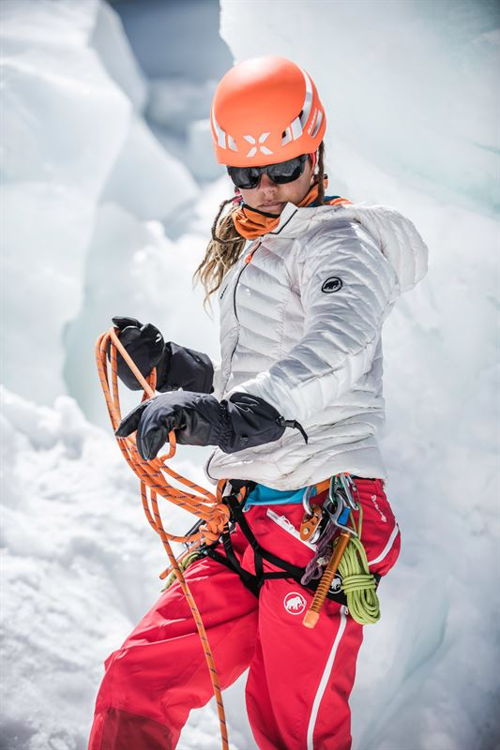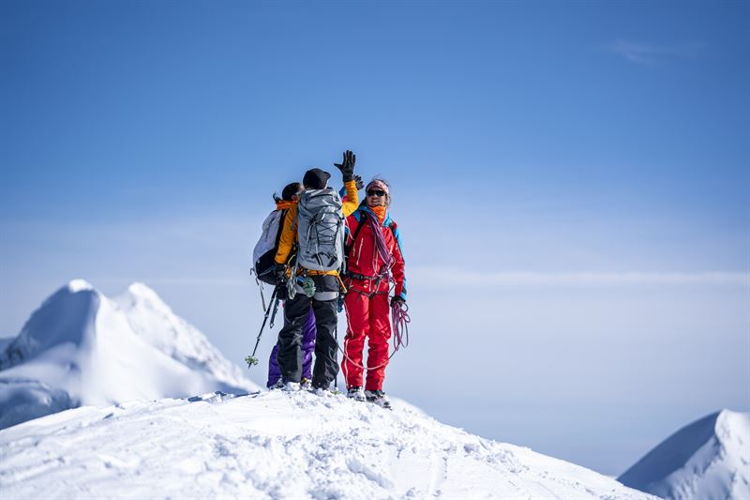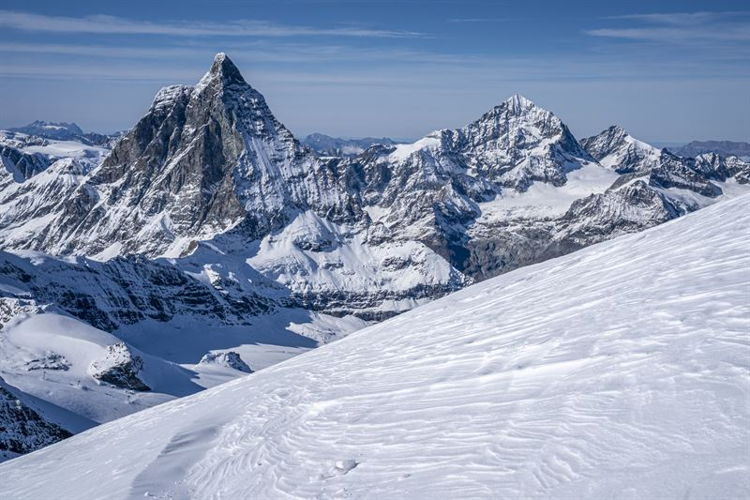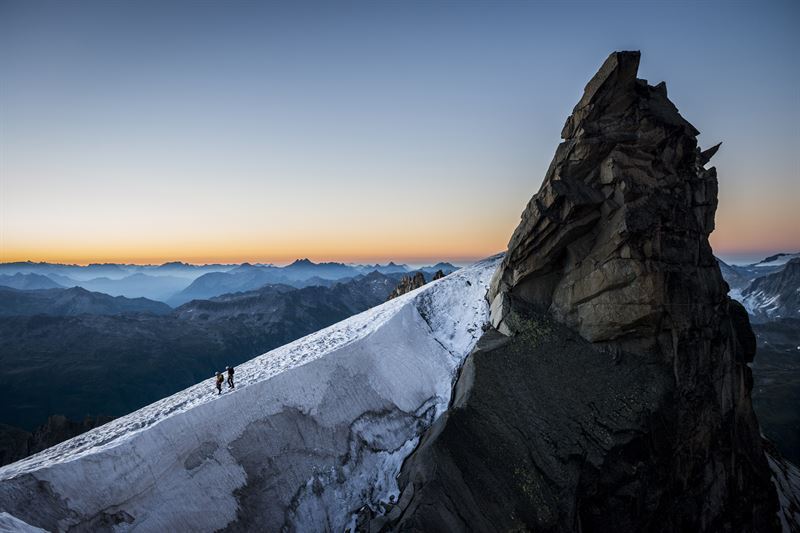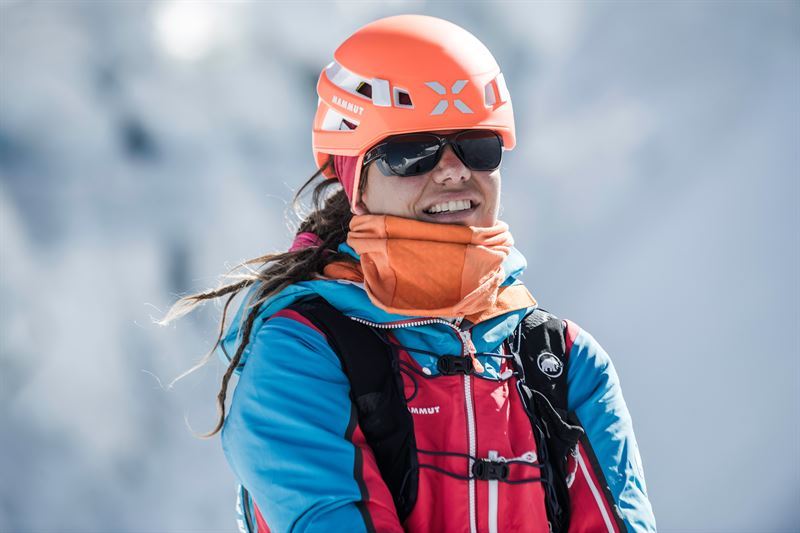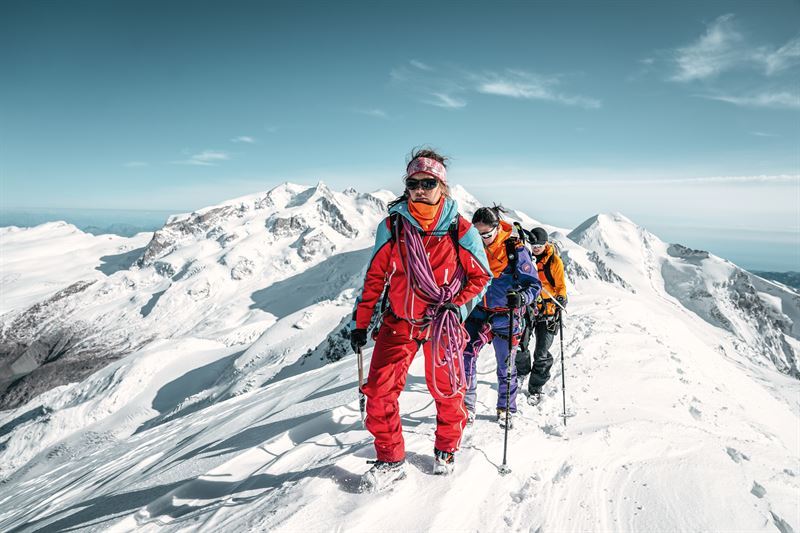FASCINATION ALPINE TOUR – THE SAFE WAY TO THE FIRST SUMMIT
Story | This summer, Mammut and Switzerland Tourism are taking women to the magical peaks of Switzerland's 4000-meter mountains.
March 8, 2021
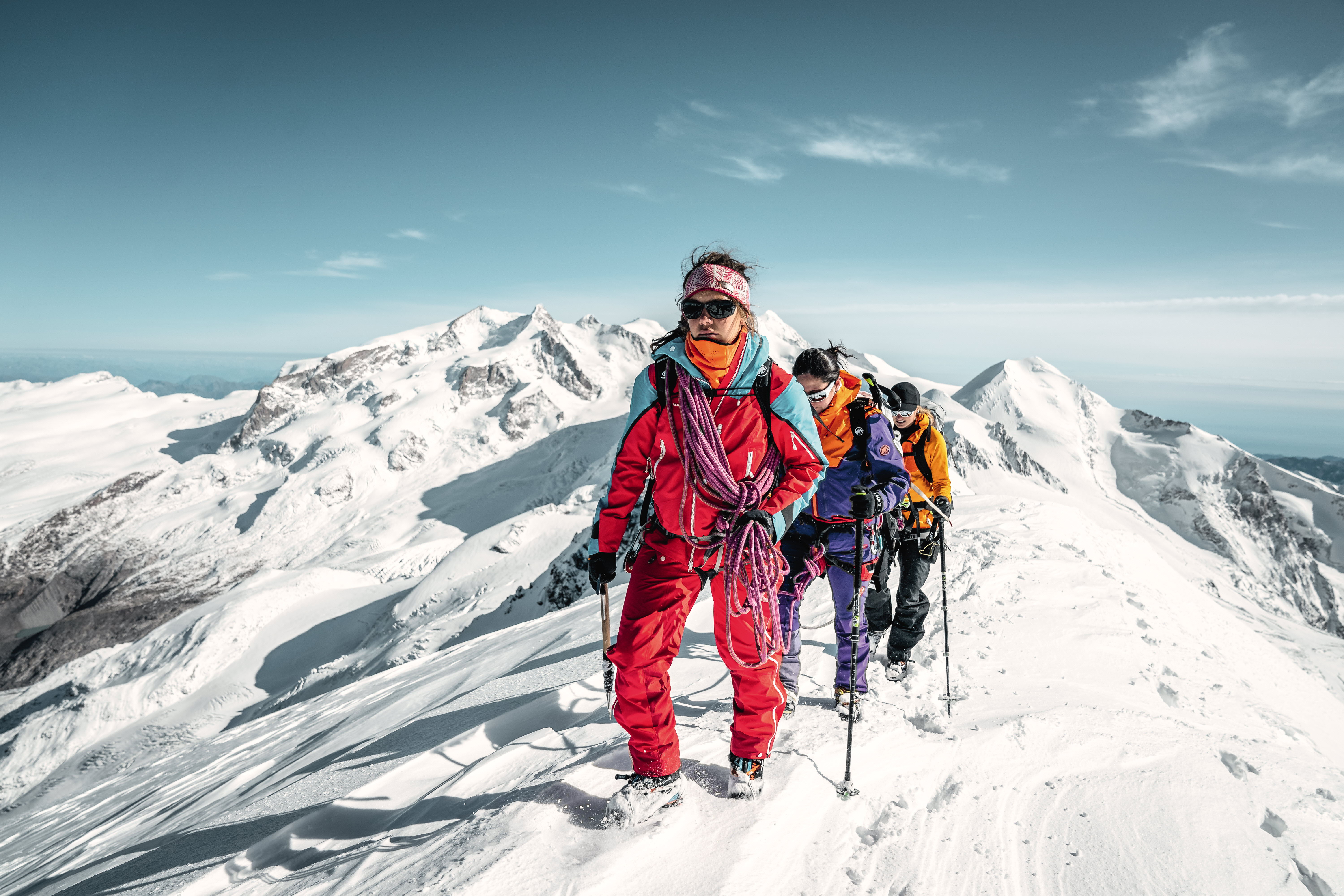
The breathtaking Swiss mountains, massive glaciers, steep flanks, and narrow ridges – an alpine tour offers a unique mountain experience. At the same time, it requires specific preparation and safe behavior on the mountain. As part of the "100% Women Peak Challenge" initiated by Switzerland Tourism, Mammut accompanies female alpinists and beginners as they ascend to new heights and shows them the safe way to reach the snow-covered peaks.
Being off marked hiking trails, crossing a glacier in absolute silence, and moving towards the summit in the first rays of sunshine - an incomparable feeling. Standing on the summit of a 4000-meter peak, many report a sense of endless freedom. However, this freedom needs to be worked for. Only through thoughtful preparation, suitable material, necessary experience, or a mountain specialist's accompaniment will the challenge ultimately become an exceptional success. In discussion with Franz Widmer, head of the Mammut Alpine School, and Caro North, mountain guide and Mammut Pro Team athlete, the following central aspects of safe mountaineering emerged:
GOOD PHYSICAL CONDITION AS A RELIABLE FOUNDATION
Alpine tours are not spontaneous Sunday hikes. Even on technically easier tours, it's likely to be on the trail for several hours. Physical fitness with a good basic condition is a prerequisite for a safe tour. Because the fitter you are, the longer your concentration lasts and the better you can avoid mistakes and accidents. Physical training is also a must for Caro North. Individual preferences can be taken into account when preparing: «Longer hikes, jogging or Nordic walking, as well as strength training for the legs, are ideal for preparing the muscles for the demands of an alpine tour.»
PLANNING A TOUR
Thorough planning plays an important role at any alpine tour. This includes studying tour guides and terrain maps, analyzing difficult key passages, and making a proper self-assessment. «Solid mountaineering experience is an elementary point for success,» explains Franz Widmer of the Mammut Alpine School. «Anyone who has never done an alpine tour before should only tackle one under the guidance of an experienced mountain guide. Our mountain guides know the route and are in control of time management. This way, participants can fully concentrate on themselves and their bodies on a guided tour.»
Mountain guide Caro North agrees: «On demanding alpine tours, especially at critical points or in changeable weather, it is important to have this experience to be able to react correctly. The accompaniment of experienced mountain specialists can protect against mistakes with serious consequences».
REGULAR TRAINING
Anyone who wants to independently move in the terrain must have profound basic knowledge. Mountaineering courses are indispensable. For beginners, the Fundamentals of Rock and Ice course offered by the Mammut Alpine School is particularly suitable, while experienced mountaineers can take the intensive course in high-alpine expeditions. This is the best way to ensure a practiced and safe handling of crampons, crevasse rescue, rope walking, or securing on the ridge.
EQUIPMENT AND KNOWLEDGE OF MATERIALS
On alpine tours, standard equipment is not enough. In addition to the essential technical equipment consisting of rope, crampons, ice ax, harness, and many other items, there is a lot to consider in the choice of personal clothing. Where surefootedness is an absolute must, a fitting shoe is essential. When it comes to clothing the upper body, the multi-layer principle also proves its worth on alpine tours. Early in the morning or on higher and sometimes windy peaks, it can get surprisingly cold even in summer. Here, too, it is important to seek advice, draw on experience and, above all, practice using the basic technical equipment.
GIVE THE BODY TIME TO ADJUST
Instead of doing a 4000-meter peak as the first alpine tour, it is advisable to start with peaks around 3000 meters. Because «altitudes above 2500 meters also have an effect on the body and mind», explains Franz Widmer and adds: «During acclimatization, it is important to give the body time to slowly get used to the thinner air.» For this, Caro North recommends an overnight stay at about 2500 meters (lower than the day's destination) before the summit tour. «This additionally helps the body to recover overnight after the initial exertion, to get used to the conditions and thus to be able to cope with the altitude ascent on the following day» Caro further advises and immediately adds a pro tip:
«You should definitely drink enough at this altitude. In this climate, the body loses a lot of fluid through breathing, as the air is drier than at lower altitudes».
Anyone who wants to take up the challenge can participate in the 100% Women Peak Challenge initiated by Switzerland Tourism. Between 8 March and 8 October 2021, all-women rope teams will be challenged to ascend the Swiss Alps' highest peaks. Mammut Pro Team athlete Caro North will lead rope teams with her vast wealth of experience as a mountain guide. Together with Caro North, the Mammut Alpine School has created a range of tours exclusively for women who want to take part in the Challenge and reach new heights.All those interested in gaining their first experience of alpine touring, guided tours of the Mammut Alpine School on the Breithorn, Allalinhorn, Sustenhorn, and Vrenelisgärtli are available.
About Mammut Alpine School
The overwhelming view from a mountain top, a trekking tour across ever-present ice, climbing a rock face, or skiing through fresh powder snow on a cold winter's day, are all unforgettable moments. Whether summer or winter, training course or summit destination, weekend or holiday: The Mammut Alpine School offers a wide range of exceptional mountain experiences.
DOCUMENTS FOR DOWNLOAD
Mammut Guide for Alpine Tours
PDF - 285 Kb
Press Release Switzerland Tourism
PDF - 254 Kb
Mediapackage Switzerland Tourism
PDF - 1.5 Mb

